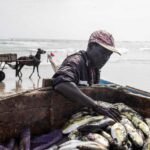Démocratie: ces présidents qui préparent leurs fils à la succession

Le président du Congo-Brazzaville, Denis Sassou-Nguesso, a nommé son fils Denis-Christel au poste de ministre – une décision qui a relancé les spéculations médiatiques selon lesquelles il aurait en tête une succession dynastique.
Non pas qu’une telle transition semble imminente. Élu pour un nouveau mandat en mars, après avoir dirigé le pays pendant la totalité des 41 dernières années, sauf cinq, rien n’indique que le chef de l’État, âgé de 77 ans, ait perdu son appétit pour le pouvoir.




